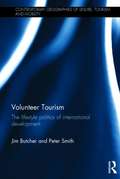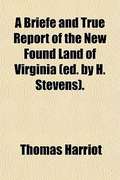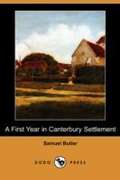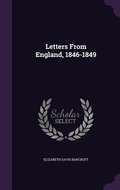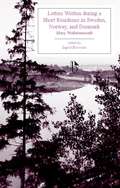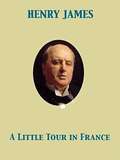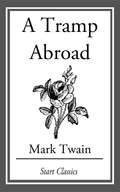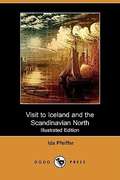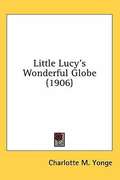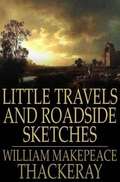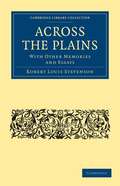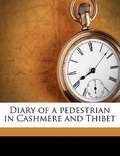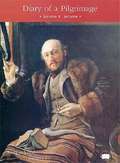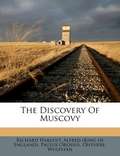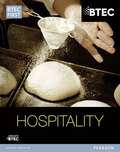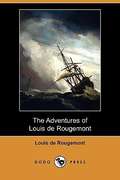- Table View
- List View
Volunteer Tourism And Development
by Peter SmithJust a generation ago the notion that holidays should be invested with ethical and political significance would have sounded odd. Today it is part of the lifestyle political landscape. Volunteer tourism is indicative of the growth of lifestyle strategies intended to exhibit care and responsibility towards others less fortunate, strategies aligned closely with developing one's ethical identity and sense of global responsibility. It sits alongside telethons, pay-per-click, Fair Trade and ethical consumption generally as a way to "make a difference". Volunteer tourism involves a personal mission to address the political question of development. It draws upon the private virtues of care and responsibility and disavows political narratives beyond this. Critics argue that this leaves the volunteers as unwitting carriers of damaging neoliberal or postcolonial assumptions, whilst advocates see it as offering creative and practical ways to build a new ethical politics. By contrast, this volume analyses volunteer tourism as indicative of a retreat from public politics into the realm of private experience, and as an expression of diminished political and moral agency. This thought provoking book draws on development, political and sociological theory and is essential reading for students, researchers and academics interested in the phenomenon of volunteer tourism and the politics of lifestyle that it represents. 9780415749015 9781315796376
A Brief and True Report of the New Found Land of Virginia
by Thomas HarriotFor more than 400 years, scholars from an array of disciplines have recognized Theodor de Bry's 1590 edition of Thomas Hariot's A briefe and true report of the new found land of Virginia as a book whose influence shaped contemporary European perceptions of North America, as well as subsequent research on that period for centuries to come. <P> <P> The book, upon which the present volume is based, is from the collections of the Library at the Mariners' Museum. It is extremely rare, containing hand-colored illustrations from the period, and is one of only three recorded copies with colored plates. This complete facsimile edition presents de Bry's exceptional engravings, based on John White's sixteenth-century watercolors, in their original hand-colored form. The book is available in paperback and as a limited cloth edition of two hundred numbered copies. Both editions are printed by the award-winning Stinehour Press. <P> <P> As the first volume in de Bry's celebrated Grand Voyages, a series of publications chronicling many of the earliest expeditions to the Americas, this book, which incorporates a 1588 text by Thomas Hariot, was illustrated and published in four languages. It became for many Europeans their first glimpse of the American continent. Accompanying the Latin facsimile is an English text. The first section is modernized from earlier versions of the English, and the second part, which accompanies the plates, is newly translated from the original Latin. <P> <P> In addition to a valuable introduction, the book includes two illuminating essays. The first, by Karen Ordahl Kupperman, examines the early American settlement and tells how a collaboration between the writer and mathematician Thomas Hariot and the artist John White (later governor of the Roanoke Colony) evolved into a rich study not only of English colonial life but of the Indian culture and the natural resources of the region. The second essay, by Peter Stallybrass, uncovers new information in the much studied plates and presents an intriguing theory about the creation and importance of the engravings. <P> <P> This facsimile edition will appeal to students and scholars in several fields of study, from American history and ethnography to fine arts and the history of the book, and will provide the reader with the best illustration of the New World as it was first presented to the Old.
A First Year in Canterbury Settlement
by Samuel ButlerA First Year in Canterbury Settlement, the earliest book by Butler, is a beautifully narrated tale of a colonial settler. <P> <P> Through journal of the author as a young emigrant, we get a first-hand account of his sea voyage to New Zealand. The vibrant descriptions of flora and fauna of the new land show his keen interest in everything, from exploration of the terrain to sheep-farming. Informative!
Letters from England, 1846-1849
by Elizabeth Davis BancroftElizabeth Davis Bancroft (1803 - 1886) was born in Plymouth,Massachusetts. She was the wife of the famous American historian and statesman George Bancroft (1800 - 1891). Bancroft is most famous for the letters she wrote to family members from England. Though these letters were not intended for publication, because of the exuberance and the clarity of Bancroft’s depiction of Victorian social life in London, they were published as Letters from England (1846 - 1849).
Letters Written During a Short Residence in Sweden, Norway, and Denmark
by Mary Wollstonecraft"The art of travelling is only a branch of the art of thinking," Mary Wollstonecraft wrote in one of her many reviews of works of travel writing. A Short Residenceis her own travel memoir. In a series of letters addressed to an unnamed lover, the work narrates Wollstonecraft's journey through Scandinavia in 1795, on much of which she was accompanied by her infant daughter. Passionate and personal, A Short Residenceis at once a moving epistolary travel narrative, a politically-motivated ethnographic tract, a work of scenic tourism, and a sentimental journey. It is both as much a work of political thought as Wollstonecraft's better known treatises, and a brilliant, innovative, and influential work in the genre. This Broadview edition provides a helpful introduction and extensive appendices that contextualize this remarkable text in relation to key political and aesthetic debates. It also includes a significant selection from Wollstonecraft's travel reviews.
A Little Tour in France
by Henry JamesI am ashamed to begin with saying that Touraine is the garden of France; that remark has long ago lost its bloom. The town of Tours, however, has some thing sweet and bright, which suggests that it is sur- rounded by a land of fruits. <P> <P> It is a very agreeable little city; few towns of its size are more ripe, more complete, or, I should suppose, in better humor with themselves and less disposed to envy the responsibili- ties of bigger places. It is truly the capital of its smil- ing province; a region of easy abundance, of good living, of genial, comfortable, optimistic, rather indolent opinions. Balzac says in one of his tales that the real Tourangeau will not make an effort, or displace him- self even, to go in search of a pleasure; and it is not difficult to understand the sources of this amiable cynicism. He must have a vague conviction that he can only lose by almost any change. Fortune has been kind to him: he lives in a temperate, reasonable, sociable climate, on the banks, of a river which, it is true, sometimes floods the country around it, but of which the ravages appear to be so easily repaired that its aggressions may perhaps be regarded (in a region where so many good things are certain) merely as an occasion for healthy suspense.
A Tramp Abroad
by Mark Twain"A Tramp Abroad" is a work of travel literature, including a mixture of autobiography and fictional events, by American author Mark Twain, published in 1880. <P> <P> The book details a journey by the author, with his friend Harris (a character created for the book, and based on his closest friend, Joseph Twichell), through central and southern Europe. While the stated goal of the journey is to walk most of the way, the men find themselves using other forms of transport as they traverse the continent. The book is the third of Mark Twain's five travel books and is often thought to be an unofficial sequel to the first one, The Innocents Abroad. As the two men make their way through Germany, the Alps, and Italy, they encounter situations made all the more humorous by their reactions to them. The narrator (Twain) plays the part of the American tourist of the time, believing that he understands all that he sees, but in reality understanding none of it.
Visit to Iceland and the Scandinavian North
by Ida PfeifferA besetting sin of the Icelanders is their drunkenness. Their poverty would probably not be so great if they were less devoted to brandy, and worked more industriously. <P> <P> It is dreadful to see what deep root this vice has taken. Not only on Sundays, but also on week-days, I met peasants who were so intoxicated that I was surprised how they could keep in their saddle. I am, however, happy to say that I never saw a woman in this degrading condition.
Little Travels and Roadside Sketches
by William Makepeace ThackerayThough William Makepeace Thackeray eventually gained fame for picaresque and satirical novels such as Vanity Fair and The Luck of Barry Lyndon, he was also a prolific travel writer and essayist. This collection presents an array of Thackeray's most beloved travel essays and observations.
Across the Plains, with Other Memories and Essays
by Robert Louis StevensonThe celebrated Scottish writer Robert Louis Stevenson arranged for his friend the art historian Sidney Colvin to select and organise the essays in this volume, many of which had originally appeared in 1888, though some date back to the early 1880s. <P> <P> It was published in 1892, two years before Stevenson's untimely death. Colvin obtained many of the pieces from their original publishers, including magazines such as Fraser's, Longman's, The Magazine of Art and Scribner's. What is particularly noteworthy about this collection is that although Stevenson had settled in the South Seas well before it appeared, all the items included were written prior to his journey there. Colvin mentions that the concluding pieces in particular were written during a period of considerable gloom and sickness for Stevenson, who himself claimed to 'recover peace of body and mind' after moving to the Pacific in 1890.
Diary of a Pedestrian in Cashmere and Thibet
by W. H. KnightNothing could exceed the beauty of the view as we approached our intended halting-place. Having crossed the torrent by a wooden bridge, the mountains we had been winding through showed out in all their grandeur, while above us, inaccessible peaks, with sharp and fanciful projections, nestled their mighty heads among the fleecy clouds, which hung about after the recent rains. ~ ~ ~ Captain William Henry Knight journeyed through Kashmir and Tibet in 1860 in the company of another officer and a porter. Having spent a year and a half in India with his regiment, Captain Knight had managed to obtain a six months' leave of absence in order to escape the hot season and journey through the cool foothills of the Himalayas. His goal in this volume was to represent "a faithful picture of travels in regions where excursion trains are still unknown, and Travelers' Guides unpublished." WILLIAM HENRY KNIGHT was a Captain in England's Forty-Eighth Regiment. This is his only known work.
Diary of a Pilgrimage
by Jerome K. JeromeThis is a sensible book. I want you to understand that. This is a book to improve your mind. In this book I tell you all about Germany--at all events, all I know about Germany--and the Ober-Ammergau Passion Play. I also tell you about other things. I do not tell you all I know about all these other things, because I do not want to swamp you with knowledge. I wish to lead you gradually. When you have learnt this book, you can come again, and I will tell you some more.
The Cruise of the Snark
by Jack LondonThe Cruise of the Snark (1911) is a memoir of Jack and Charmian London''s 1907-1909 voyage across the Pacific. His descriptions of surf-riding, which he dubbed a royal sport, helped introduce it to and popularize it with the mainland. London writes: Through the white crest of a breaker suddenly appears a dark figure, erect, a man-fish or a sea-god, on the very forward face of the crest where the top falls over and down, driving in toward shore, buried to his loins in smoking spray, caught up by the sea and flung landward, bodily, a quarter of a mile. It is a Kanaka on a surf-board. And I know that when I have finished these lines I shall be out in that riot of colour and pounding surf, trying to bit those breakers even as he, and failing as he never failed, but living life as the best of us may live it. . from Wikipedia, The Free Encyclopedia. Intuitive navigation. . Text annotation and mark-up. .
The Discovery of Muscovy
by Richard HakluytIt remaineth that a large discourse be made of Moscow, the principal city of that country, and of the prince also, as before we have promised. The empire and government of the king is very large, and his wealth at this time exceeding great. And because the city of Moscow is the chiefest of all the rest, it seemeth of itself to challenge the first place in this discourse. Our men say, that in bigness it is as great as the city of London, with the suburbs thereof.
Btec First In Hospitality Student Book (PDF)
by Sue Holmes Tracay Mead Elaine Jackson Kathryn MorganThis student book covers all the mandatory units and optional units in BTEC hospitality. The attractive, accessible layout is packed with features, which draw out key points and bring learning to life.
The Adventures of Louis de Rougemont
by Louis De RougemontLouis de Rougemont (1847-1921) was a would-be explorer who claimed to have had adventures in Australasia. "de Rougemont" was born Henri Louis Grin in 1847 in Suchy, Switzerland. <P> <P> In 1898 he began to write about his invented adventures in the British periodical The Wide World Magazine under the name Louis de Rougemont. He described his alleged exploits in search of pearls and gold in New Guinea and claimed to have spent thirty years living with Indigenous Australians in the Australian outback. He claimed that the tribe with whom he had lived had worshipped him as a god. He also claimed to have encountered the Gibson expedition of 1874. Various readers expressed disbelief in his tales from the start, for example, claiming that no one can actually ride a turtle. He had also claimed to have seen flying wombats. The fact that he could not place his travels on the map aroused suspicion. Readers' arguments in the pages of London newspaper, the Daily Chronicle, continued for months.
Car (UEB Contracted)
This is a family car shown from the side. There is a locator dot shown, which will be at the top left of the page when the image is the right way up. The front of the car is on the left of the page and the rear is on the right. Sticking out at the very front of the car is the bumper, with the front wing housing the engine. To the right are two passenger doors each with a window and handle. At the back of the car there is a luggage compartment or boot, with the rear bumper sticking out below. Underneath the car are two wheels with hubcaps in the centre of each.
Car (UEB uncontracted)
This is a family car shown from the side. There is a locator dot shown, which will be at the top left of the page when the image is the right way up. The front of the car is on the left of the page and the rear is on the right. Sticking out at the very front of the car is the bumper, with the front wing housing the engine. To the right are two passenger doors each with a window and handle. At the back of the car there is a luggage compartment or boot, with the rear bumper sticking out below. Underneath the car are two wheels with hubcaps in the centre of each.
Car (Large Print)
This is a family car shown from the side. There is a locator dot shown, which will be at the top left of the page when the image is the right way up. The front of the car is on the left of the page and the rear is on the right. Sticking out at the very front of the car is the bumper, with the front wing housing the engine. To the right are two passenger doors each with a window and handle. At the back of the car there is a luggage compartment or boot, with the rear bumper sticking out below. Underneath the car are two wheels with hubcaps in the centre of each.
Double decker bus (large print)
by RnibThis double decker bus is shown from the side. There is a locator dot shown, which will be at the top left of the page when the image is the right way up. The front is on the left of the page and the rear is on the right. At the front of the bus in the bottom left corner, there is a door with a window. There are many windows on the bus; there is a row along the top of the bus for the upper deck, and a row below for the lower deck. At the bottom of the bus two wheels are shown.
Double decker bus (UEB Contracted)
by RnibThis double decker bus is shown from the side. There is a locator dot shown, which will be at the top left of the page when the image is the right way up. The front is on the left of the page and the rear is on the right. At the front of the bus in the bottom left corner, there is a door with a window. There are many windows on the bus; there is a row along the top of the bus for the upper deck, and a row below for the lower deck. At the bottom of the bus two wheels are shown.
Double decker bus (UEB uncontracted)
by RnibThis double decker bus is shown from the side. There is a locator dot shown, which will be at the top left of the page when the image is the right way up. The front is on the left of the page and the rear is on the right. At the front of the bus in the bottom left corner, there is a door with a window. There are many windows on the bus; there is a row along the top of the bus for the upper deck, and a row below for the lower deck. At the bottom of the bus two wheels are shown.
Fire Engine (Large Print)
by Rnib BookshareThe fire engine is viewed from the side with only two of its four wheels showing. There is a locator dot shown, which will be at the top left of the page when the image is the right way up. The vehicle is divided into two sections; the front (cab) of the vehicle where the firemen sit is at the left, with the equipment and water tank section at the right of the image. There is a headlight on the lower left of the image. Up from this is the emergency vehicle reflective strip which runs the length of the cab. This side of the cab has two crew doors. The front door to the left has a mirror to its left. The door handles are near the bottom right corner of each door window. There is a third small window between the doors. Up from the top left corner of the front door is the siren horn. To the right of this is the emergency light, and then the aerial. Running along the top of the equipment and water tank section is the ladder supported on two strong brackets. Down from the ladder in the body of the vehicle are three pull-down roller equipment doors. At the lower right of the image, one of the fire engine's tail lights is shown.
Fire Engine (UEB Contracted)
by Rnib BookshareThe fire engine is viewed from the side with only two of its four wheels showing. There is a locator dot shown, which will be at the top left of the page when the image is the right way up. The vehicle is divided into two sections; the front (cab) of the vehicle where the firemen sit is at the left, with the equipment and water tank section at the right of the image. There is a headlight on the lower left of the image. Up from this is the emergency vehicle reflective strip which runs the length of the cab. This side of the cab has two crew doors. The front door to the left has a mirror to its left. The door handles are near the bottom right corner of each door window. There is a third small window between the doors. Up from the top left corner of the front door is the siren horn. To the right of this is the emergency light, and then the aerial. Running along the top of the equipment and water tank section is the ladder supported on two strong brackets. Down from the ladder in the body of the vehicle are three pull-down roller equipment doors. At the lower right of the image, one of the fire engine's tail lights is shown.
